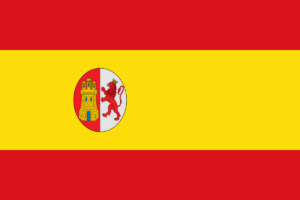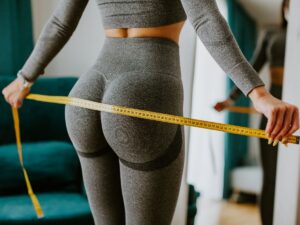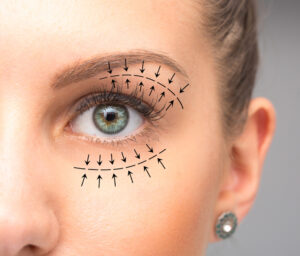Do you have lower abdominal rashes, excess skin and fat? Atlanta area residents trust the skilled and experienced professionals at Georgia Plastic & Reconstructive Surgery for body sculpting such as panniculectomy after weight loss using the latest and proven techniques.
Panniculectomy surgery removes hanging fat and skin, typically after massive weight loss. It may be performed as a single procedure or combined with other surgery. While weight loss can improve the health of many obese individuals, drastic weight loss, particularly when associated with bariactric surgery can leave behind large amounts of excess skin. The excess skin and fat in the lower stomach area that hangs below the belt line is called the pannus, or abdominal “apron,” and can have several negative affects on one’s quality of life. The extra fold or folds of skin can hinder hygiene, put stress on the back, and make everyday activities difficult. Often, the areas in the pubic region under the pannus can become moist as perspiration is trapped. This can cause rashes, skin ulcers, and odor. Clothing may not fit comfortably, and, if severe, even simple activities such as standing and walking can become difficult. In such cases, a surgical procedure called panniculectomy, may be appropriate. Panniculectomy is different from abdominoplasty (tummy tuck).
WHO IS A GOOD CANDIDATE FOR PANNICULECTOMY
People who have lost a large amount of weight and are experiencing negative side effects due to excess skin in the abdominal area are good candidates for panniculectomy. Be aware that a panniculectomy patient should have had stable weight for at least six months, and, if a woman, should not be planning to bear children.
Panniculectomy may be right for you if you
- Have lost at least 50 pounds
- Are in relatively good physical condition
- Have excess skin folds without significant fat deposits
- Have stabilized your weight
- Are following a proper diet and exercise plan
- Have realistic expectations of the surgery’s outcome
- Are physically, mentally and emotionally ready to undergo the panniculectomy procedure and the recovery process
WHEN IS THE RIGHT TIME FOR A PANNICULECTOMY?
- At least one year after weight-loss surgery. A study by the American Society of Plastic Surgeons shows that patients who wait a year after bariatric surgery have significantly fewer complications than those who have a panniculectomy sooner. Patients who wait are healthier going into the surgery. Their weight loss often results in getting their diabetes under control, lowering their blood pressure and reducing the stress on their heart.
- When your weight has stabilized for at least six months. If you have a panniculectomy sooner and then lose more weight, you may need a second operation later.
HOW BIG CAN A PANNUS GET?
Grade 1: Pannus extends to the pubic hairline & mon pubis, but not the genitals
Grade 2: Pannus covers the genitals
Grade 3: Pannus extends to the upper thigh
Grade 4: Pannus extends to the mid-thigh
Grade 5: Pannus extends to the knee and beyond
WHAT KINDS OF PHYSICAL PROBLEMS CAN A PANNUS CAUSE?
A pannus can create difficulties in:
- Getting in and out of bed
- Standing and walking straight
- Tying your shoes
- Crossing your legs
- Finding clothes that fit appropriately
CAN A PANNUS ALSO CAUSE MEDICAL PROBLEMS?
Yes. The pannus often traps perspiration under the hanging folds of skin, which can lead to:
- Recurrent skin rashes
- Skin infections
- Foul odors
- Non-healing skin ulcers
A pannus can also cause back pain. In the most extreme cases, a person can even develop gangrene if the blood supply to the pannus is insufficient.
DOES INSURANCE COVER A PANNICULECTOMY?
Some insurance companies will pay for a panniculectomy if it is considered medically necessary. To receive insurance benefits, you will need to submit documented proof of medical necessity and have it approved by your insurance company before you undergo surgery.
If you do not qualify for medical benefits for a panniculectomy, financing is available. Alternatively, many patients will request and pay for tummy tuck.
WHEN IS A PANNICULECTOMY CONSIDERED MEDICALLY NECESSARY?
Each insurance plan has its own requirements, but many insurers will cover a panniculectomy if:
- The pannus is Grade 2 or greater;
- You have lost 100 pounds or more and have been at a stable weight for at least six months;
- If you have had weight-loss surgery, the operation was at least 18 months ago;
- You have a documented history of recurrent rashes or non-healing skin ulcers for at least three months; and
- The pannus causes demonstrated difficulty with walking, sitting or standing, or interferes with the activities of daily living.
Check your insurance policy to see what benefits you may qualify for if you are considering a panniculectomy.
HOW IS A PANNICULECTOMY PERFORMED?
A panniculectomy is done on an inpatient basis for some patients. The surgery takes three to five hours—or longer if combined with other procedures such as hernia repair. The incision runs horizontally from hip to hip, curving downward in the middle.
After Dr. Okoro makes the incision, he frees up the excess skin and fat and removes the excess skin and fat. Usually, the navel (umbilicus) is NOT removed in most cases. The incisions are then closed in layers with dissolving sutures. Drains may be placed depending on the extent of your procedure. Dr Okoro can also repair any hernias before closing the incision in layers. If you are combining your panniculectomy with tummy tuck, the tummy tuck is then performed prior to closing the incision.
HOW FAST IS THE HEALING PROCESS?
Although everyone heals at a different rate, you can expect that your recovery will follow this general time line:
Within the first week
- Surgical drainage tubes will be removed
- Bruising and swelling will reach a peak
After several weeks
- You will no longer need to wear a support garment
- You may gradually increase your activity and exercise
- You may return to non-strenuous work (typically within the first three weeks)
- Bruising and swelling will continue to subside and you’ll begin to see your results
After a few months
- You’ll see a truer picture of the final result of your surgery
- Numbness or tightness will disappear
- The reddish color of your incision line may begin to fade (full fading may take a year or more)
WHAT RESULTS CAN YOU EXPECT FROM A PANNICULECTOMY?
You will see a noticeable difference in the shape of your body quite soon after surgery. Your firmer, flatter abdomen will no doubt boost your confidence and make you feel more comfortable in clothing.
After a few months, your incision line will continually fade. But you should realize that that your scar will be permanently visible. Many patients view their scar as a small tradeoff for a firmer, sleeker appearance.
Panniculectomy produces long-lasting results. Unless you gain or lose a significant amount of weight after your surgery, you can expect to retain your new shape for many years. If you lose more weight in the future, Dr. Okoro may suggest additional treatment for restoring a sleeker abdominal contour.
THE PANNICULECTOMY PROCEDURE
Panniculectomy is an invasive surgical procedure which can take from three to five hours to complete, and always requires at least one overnight stay at the hospital. Unlike abdominoplasty, panniculectomy does not tighten muscle or reposition the belly button. It only removes the excess skin and fat of the pannus from the lower abdomen, using a horizontal incision that runs from hip to hip with a downward curve, and a vertical incision from below the sternum to the pubic area. After overhanging skin and fat are removed, the remaining skin is pulled tight and sutured together.
SUMMARY
Dr. Okoro has extensive experience with panniculectomy. The best result in panniculectomy comes from surgical art, experience, and judgment.
To determine if you are a good candidate for panniculectomy, Dr. Okoro will review your health history and perform an examination during your consultation. He will also take preoperative photos during your visit. During the consultation, Dr. Okoro will understand your goals and desires and he will review available techniques for treatment. Liposuction for men is usually performed as an outpatient procedure. We instruct all patients to wear compression garment and to avoid strenuous activity for several weeks. Patients may drive and return to work once they discontinue narcotic pain medicine.
Call today to schedule a confidential consultation for panniculectomy at our plastic surgery practice, please call us or email us today!
PANNICULECTOMY FAQ
Q. ISN’T A PANNICULECTOMY JUST A TUMMY TUCK?
A. No—there’s an important distinction between the two. A panniculectomy simply removes the overhanging skin and fat from the lower abdomen.
A tummy tuck removes excess abdominal skin and fat as well—but unlike a panniculectomy, it also tightens the muscles of the abdominal wall and repositions the navel.
Q. WHAT DETERMINES WHETHER A PANNICULECTOMY OR A TUMMY TUCK IS THE RIGHT CHOICE FOR ME?
A. That all depends on your individual case. When I evaluate you during your consultation, I will explain my recommendations for you. Even for patients who need a panniculectomy, I sometimes do the full tummy tuck or abdominoplasty to get a more pleasing result.
Q. WILL I HAVE PAIN AFTER MY SURGERY?
A. Yes, you will experience some discomfort. The pain usually lasts up to seven days. We have “pain pumps” you can use to significantly decrease your pain following surgery.
Q. IS A PANNICULECTOMY CONSIDERED COSMETIC SURGERY OR A RECONSTRUCTIVE PROCEDURE?
A. The American Society of Plastic Surgeons considers a panniculectomy a reconstructive procedure when it is performed to correct or relieve structural defects of the abdominal wall and/or chronic back pain due to a functional weakness of the front abdominal wall.




